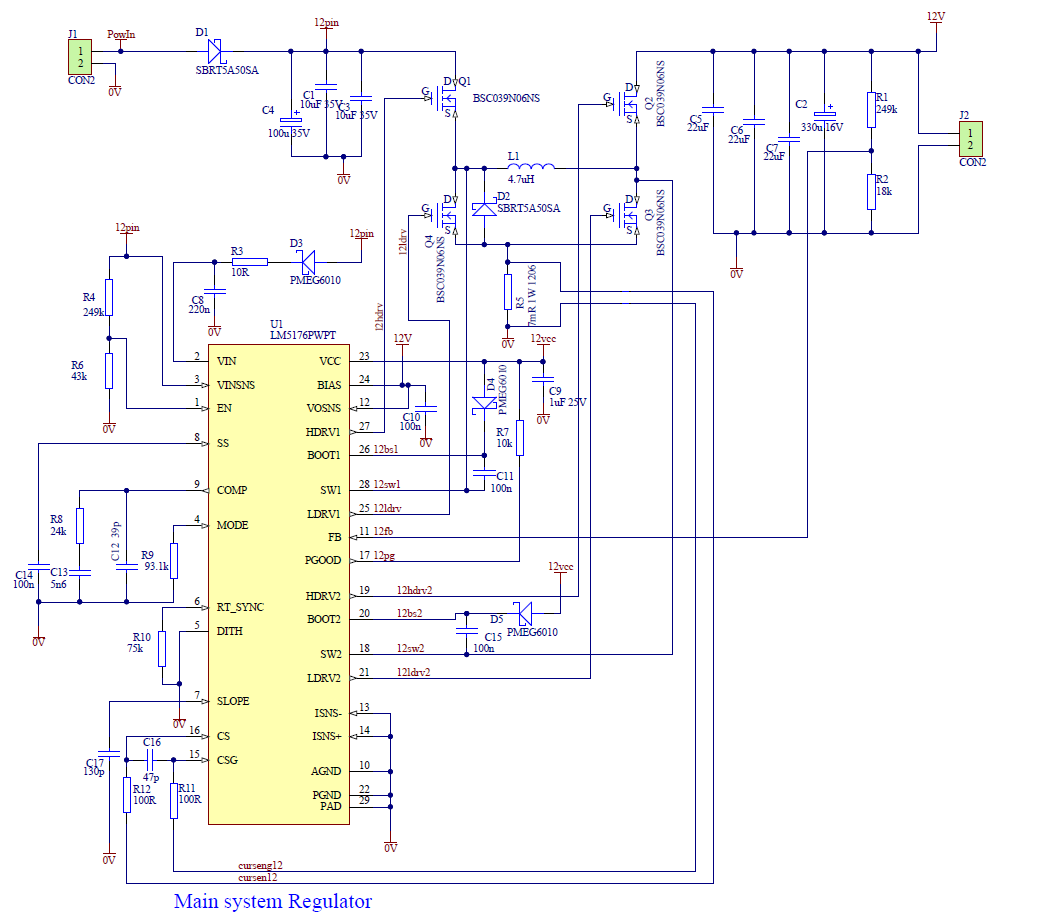Hi, I've have a problem with power dissipation at the point at which the regulator switches from buck to boost (and visa-versa) on low load. The regulator was designed in Webench to give 12V at up to 4A with an input of between 8V and 30V. We have basically copied the Webench layout (but shrunk it to reduce board area). This issue occurs when with a 12V 5mA load (2K2 resistor) and the incoming supply it stepped in 1 v steps (with time to read meters and record result - by writing on paper - between each step. as the input voltage reaches 12V the input supply current goes up significantly (150mA plus from a much lower value of 10ish mA) recovering to the 10ish mA when passed the threshold (ether supply going up or coming down) at the same time power dissipation in the inductor goes up markedly (it gets hot) which is surprising considering the low currents in both input and output. Adding a vastly increased output capacitor (2000uF) helps in that the input current peak can be brought down to 80-100 but the inductor is still hot to touch. This suggests some kind of instability at the swop over threshold (from buck to boost) .
So the question is:- what should we checkout / trim to improve stability
(the application is for a agriculture based project that could be powered from several sources , A 12V lead acid battery , a 16.5V power pack , a four cell lithium ion battery , a 24V lead acid battery , or a solar panel or some combination of these.)


